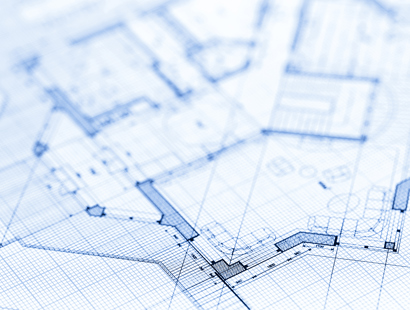
Understanding the essential elements of a commercial lease
A landlord may be looking to rent out their commercial property or a business owner may be looking for space. Associate Richa Arora explains why in both these instances, understanding the essential elements of a commercial lease is crucial.
Firstly, the question is: what is a lease? In essence, a lease is a contract between the owner of a property (the landlord) and another party (the tenant). The landlord grants the tenant the right to use and occupy the property for a specific period of time in return for recurrent payment, being the rent, and subject to other agreed terms and conditions. The tenant must have exclusive occupation of the property if the agreement is to be construed as a lease. If the agreement grants non-exclusive use, it will not be a lease.
A lease differs to a contract in that a personal contract binds the parties referred to in it. A lease, if properly constituted, is a real right. What this means is that if an owner of a property sells the property subject to a lease, the purchaser will automatically inherit the landlord's part in the lease. This will allow the landlord (i.e. the new owner) to enforce the obligations against the tenant. Conversely this arrangement protects the tenant's occupation of the property in the event of a change of ownership.
It is always advisable for the parties to agree the Heads of Terms of a lease (a non-binding pre-contractual document) before commencing the negotiation of the lease. The Heads of Terms provide a framework for negotiations and a basis for parties to reach the final agreement.
Let's now delve into the key constituents that make up a commercial lease.
Defining the extent of a property
A lease can either be of a whole building or part of it. The extent of the property must be cleared defined in the lease, preferably with a plan to show the floor layout in order to confirm what the tenant is permitted to occupy. This accuracy is also important as it clarifies the tenant’s repairing liability. In general, a tenant is responsible for repairing and maintaining a property. So, for instance, if the property includes the structural parts of a building or the roof then it would fall on the tenant to maintain these items in accordance with the lease.
The term of occupation must be stated
The duration for which the tenant has the right to occupy the property must be clearly stated in the lease.
Generally, tenants operating a business from property benefit from a form of security of tenure. This means that the lease will not end following the expiry of its contractual term and the tenant will be entitled to a new tenancy unless the landlord has grounds to oppose the renewal, as stipulated in statute. It is possible to disapply these statutory rights of security of tenure, although a notice must be served on the tenant before the lease starts and the tenant must make a declaration that they agree to exclude these rights.
Including a break clause
A break clause gives either the landlord or the tenant the right to terminate the lease early, usually after a specified notice period. A break right in the favour of a tenant is important if the tenant wishes to expand and find a new location or is in financial difficulty. Break clauses are often subject to conditions, such as the rent being up to date or payment of a penalty.
Understanding the conditions attached to rent
Rent is one of the fundamental aspects of a commercial lease. Rent can be fixed or subject to stepped increases agreed at the outset of the lease as well as subject to rent reviews at stated frequency. The lease must clearly outline the frequency of rent payments, although it is very common for the tenant to pay quarterly in advance as opposed to monthly. It must also be checked if the rent will be subject to VAT, and if it will, then VAT will typically also apply to other payments which the landlord charges the tenant under the lease. Utilities are not usually included as part of the rent, and must be paid in addition to the rent; and depending on the type of the building, as part of service charges.
What repairs and maintenance am I responsible for?
Most commercial tenants are responsible for the repair of their property and all of the plant and machinery within it. However, this depends on the extent of the property forming subject of the lease (see under Property above). A lease of whole typically includes the interior of the building as well as the structure, whereas a lease of part is usually more limited, with the landlord responsible for maintaining the structure and recharging the cost via a service charge (which can be capped if agreed).
A photographic schedule of condition is often attached to the lease so that the repair obligation is qualified to state that the tenant must maintain the property in no worse a condition than shown in the schedule. In order to understand the condition the property is in at the date of the lease, a professional survey is recommended to be carried out before committing to a lease.
Insured vs Uninsured Risk
Mostly in commercial leases, the landlord insures the building (for its full reinstatement cost), as it is the party with the capital value in the building and generally best placed to arrange the cover and retain control over the aspect (particularly in multi-tenanted buildings). The proportion of the insurance premium is re-charged to the tenant in the case of a lease of a part of the building; and if the lease is of the whole of the building, then the whole amount. The lease must state what the 'Insured Risks' are - such as flood, subsidence etc. The cover could be arranged for the property, public liability and loss of rent. The lease must specify what property the landlord is obliged to insure – will it be just the property or the common parts of a building also?
Provisions relating to what is known is 'uninsured risks' are now considered market standard. Uninsured risk is essentially a risk against which the landlord has not insured or had no obligation to insure either because it was not an insured risk or cover was not reasonably available in the market. If property damage due to an uninsured risk occurs, the lease would allow the landlord a certain period of time to elect whether it wants to reinstate or terminate the lease. In the event that the landlord elects to reinstate but doesn't then reinstate within the agreed period, that will usually trigger a right for the tenant to terminate the lease.
The conditions on assignment and subletting
A lease must have provisions dealing with how and when a tenant can either sell (assign) or sublet the property. A landlord will impose conditions on the assignment, often including that a tenant gives a guarantee that the buyer of the lease continues to comply with the lease obligations after the lease has been assigned.
Consent for alterations and improvements
The lease should outline the procedures for making alterations or improvements to the property. This includes obtaining the landlord's consent for certain types of alterations (commonly structural, and often documented in a 'licence for alterations') and restoring the property to their original condition at the end of the lease.
Other considerations
If a lease is for longer than seven years it must be registered at HM Land Registry. The tenant’s solicitors handle this task. Depending on the amount of rent and the length of the lease, stamp duty land tax may be payable by the tenant within 14 days of the completion of the lease. Again, the tenant’s solicitor will assist in this process.
Conclusion
Emphasis on the commercial terms of a lease, as well as the fundamental elements that make one up, are both very important considerations when entering into a commercial lease so that the parties can avoid unanticipated repercussions later down the line.
Get in touch
If you would like to speak with a member of the team you can contact our real estate planning and construction solicitors; Holborn office (Email Holborn) +44 (0)20 3826 7523; Kingston office (Email Kingston) +44 (0)20 3826 7518; Putney office (Email Putney) +44 (0)20 3826 7518 or complete our form.




